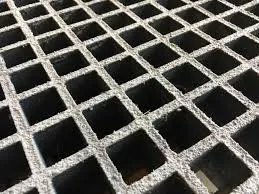
-
 Afrikaans
Afrikaans -
 Albanian
Albanian -
 Amharic
Amharic -
 Arabic
Arabic -
 Armenian
Armenian -
 Azerbaijani
Azerbaijani -
 Basque
Basque -
 Belarusian
Belarusian -
 Bengali
Bengali -
 Bosnian
Bosnian -
 Bulgarian
Bulgarian -
 Catalan
Catalan -
 Cebuano
Cebuano -
 China
China -
 China (Taiwan)
China (Taiwan) -
 Corsican
Corsican -
 Croatian
Croatian -
 Czech
Czech -
 Danish
Danish -
 Dutch
Dutch -
 English
English -
 Esperanto
Esperanto -
 Estonian
Estonian -
 Finnish
Finnish -
 French
French -
 Frisian
Frisian -
 Galician
Galician -
 Georgian
Georgian -
 German
German -
 Greek
Greek -
 Gujarati
Gujarati -
 Haitian Creole
Haitian Creole -
 hausa
hausa -
 hawaiian
hawaiian -
 Hebrew
Hebrew -
 Hindi
Hindi -
 Miao
Miao -
 Hungarian
Hungarian -
 Icelandic
Icelandic -
 igbo
igbo -
 Indonesian
Indonesian -
 irish
irish -
 Italian
Italian -
 Japanese
Japanese -
 Javanese
Javanese -
 Kannada
Kannada -
 kazakh
kazakh -
 Khmer
Khmer -
 Rwandese
Rwandese -
 Korean
Korean -
 Kurdish
Kurdish -
 Kyrgyz
Kyrgyz -
 Lao
Lao -
 Latin
Latin -
 Latvian
Latvian -
 Lithuanian
Lithuanian -
 Luxembourgish
Luxembourgish -
 Macedonian
Macedonian -
 Malgashi
Malgashi -
 Malay
Malay -
 Malayalam
Malayalam -
 Maltese
Maltese -
 Maori
Maori -
 Marathi
Marathi -
 Mongolian
Mongolian -
 Myanmar
Myanmar -
 Nepali
Nepali -
 Norwegian
Norwegian -
 Norwegian
Norwegian -
 Occitan
Occitan -
 Pashto
Pashto -
 Persian
Persian -
 Polish
Polish -
 Portuguese
Portuguese -
 Punjabi
Punjabi -
 Romanian
Romanian -
 Russian
Russian -
 Samoan
Samoan -
 Scottish Gaelic
Scottish Gaelic -
 Serbian
Serbian -
 Sesotho
Sesotho -
 Shona
Shona -
 Sindhi
Sindhi -
 Sinhala
Sinhala -
 Slovak
Slovak -
 Slovenian
Slovenian -
 Somali
Somali -
 Spanish
Spanish -
 Sundanese
Sundanese -
 Swahili
Swahili -
 Swedish
Swedish -
 Tagalog
Tagalog -
 Tajik
Tajik -
 Tamil
Tamil -
 Tatar
Tatar -
 Telugu
Telugu -
 Thai
Thai -
 Turkish
Turkish -
 Turkmen
Turkmen -
 Ukrainian
Ukrainian -
 Urdu
Urdu -
 Uighur
Uighur -
 Uzbek
Uzbek -
 Vietnamese
Vietnamese -
 Welsh
Welsh -
 Bantu
Bantu -
 Yiddish
Yiddish -
 Yoruba
Yoruba -
 Zulu
Zulu
frp handrail
FRP Handrail A Modern Solution for Safety and Aesthetics
FRP (Fiber Reinforced Polymer) handrails have emerged as a popular choice in various construction and architectural applications due to their unique combination of strength, durability, and aesthetic appeal. These handrails are made from a composite material that integrates high-strength fibers – often glass or carbon – with a polymer matrix, creating a lightweight yet robust product. This innovative material presents several advantages, making FRP handrails a preferred option for both commercial and residential projects.
FRP Handrail A Modern Solution for Safety and Aesthetics
Furthermore, FRP handrails are lightweight yet extremely durable. Their strength-to-weight ratio is significantly higher than that of traditional materials, allowing for easier handling and installation. This aspect is particularly beneficial for large-scale projects where labor efficiency is essential. Additionally, the lightweight nature of FRP does not compromise safety; these handrails are designed to meet stringent safety standards, ensuring that they provide the necessary support and protection in various settings.
frp handrail

Aesthetic versatility is another noteworthy feature of FRP handrails. They can be manufactured in a wide range of colors, textures, and finishes, enabling designers to incorporate them seamlessly into various architectural styles. Whether for modern commercial buildings or traditional homes, FRP handrails can enhance the visual appeal while maintaining safety standards. Their customizable design options make them suitable for a variety of applications, including staircases, balconies, walkways, and pool areas.
Moreover, FRP handrails are environmentally friendly. The production process of FRP materials often utilizes recycled fibers, and their long lifespan reduces the need for frequent replacement, ultimately decreasing waste. As sustainability becomes an increasingly important consideration in construction, FRP handrails align with eco-friendly building practices.
In conclusion, FRP handrails represent a modern approach to safety and design in construction. Their numerous advantages, including corrosion resistance, lightweight durability, aesthetic flexibility, and environmental sustainability, make them an ideal choice for a wide range of applications. As the demand for innovative materials continues to grow, FRP handrails will undoubtedly play a significant role in shaping the future of architectural designs and safety solutions.









